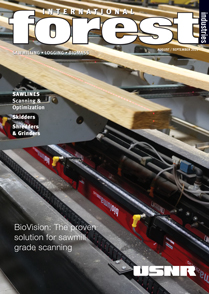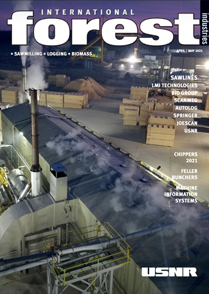EDITOR’S COMMENT ISSUE 82
Climate shines light on foresters’ responsibility
The world is in turmoil over the climate challenge. When the Paris Agreement was signed in 2015, it signalled a sense of urgency not previously present. That was thought by many to have been a step change in the priorities for governments around the world but regulation and voter-driven rhetoric and action have continuously escalated.
The Paris Agreement called for policy that would keep temperatures rises to 1.5 degrees and no more than 2 degrees. Less than six years later, policies from government and industries that aim for anything above 1.5 degrees are not seen as credible.
We have visited this topic in these column inches before, but it is worth a second trip across the climate terrain based on its relevance, but also with the COP26 meeting in Glasgow scheduled in a couple of months, which is likely to see leaders confront the reality that too little is being done for countries to meet legally binding commitments.
COP26 conversations will feature the forestry sector heavily. For a start, forestry and agriculture from a land-use perspective are major emissions contributors, admittedly this is largely from industrial agriculture requiring mechanised harvesting and land clearing – essentially the problem created by clearing forests.
Most forestry conversations will rather point to the need to preserve large carbon sinks such as the Amazon and the continued shift toward sustainable and renewable construction materials – namely wood – and away from carbon intensive steel making – the mining sector with its bulk mining of iron ore and metallurgical coal for the steel-making process, and then the steel making process itself, contribute some 12% of global emissions.
For responsible forest owners and contractors, this is an overwhelming opportunity. Very little felling of old-growth forests is still carried out today; at least from a legal perspective. Meanwhile, progress is being made at an impressive speed to improve the durability and strength of wood products so they can be substituted into buildings that would usually use steel.
The challenge for forestry is therefore a difficult one – how does the industry respond to a likely increase in demand over the next 30 years so it can play its part in the road to Net Zero, while not increasing its own emissions profile in line with that greater activity?
Better engines, will of course, play a key role and the forestry sector’s leading suppliers have made admirable progress in this regard over many years, now. Not only are engines releasing less harmful emissions per litre of fuel consumed, but the overall efficiency means less fuel is used in the first place. This achieves the handy double of fewer emissions and lower costs.
But from an International Forest Industries perspective, I can’t help wonder whether we should be doing more. When you look around the world at the changes being made in some key climate-sensitive areas, forestry appears to lag. I’m thinking primarily of electric vehicles (EV), where even the traditionally slow-moving mining sector can point to operations that are running completely on battery-operated haulage, loading and drilling units.
I will stop short of a call to arms for industry suppliers, but nothing would give me greater pleasure than to have just cause to run an EV harvesters or feller bunchers or forwarders or skidders or chippers technology review.
I can’t imagine we are too far away from that reality, as governments increase carbon taxes making investment in EV technologies a necessity. Until then, my pen will remain poised.
Enjoy
Chris Cann




